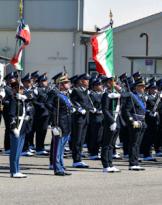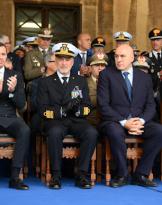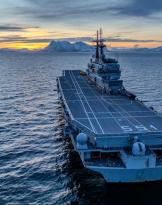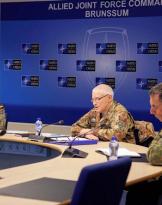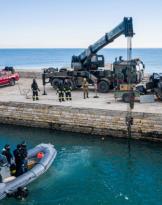From the 26 September to the 5 October, at the 43 ^ naval base of Gdynia (Poland), the NATO "Toxic Trip 2018" exercise took place. The Italian Armed Forces took part in this exercise event with a team of about 60 specialists from various aeronautical departments, including the 3 ° Stormo of Villafranca as a reference body in the Air CBRN sector (ie the air force capabilities in the contrast to the Chemical, Biological, Radiological and Nuclear threats), together with 8 military of the 7 ° NBC Defense regiment "Cremona" of the Italian Army based in Civitavecchia (RM).
The exercise, now in its 25 edition, is the main exercise event of its kind and aims to develop and consolidate the vast operational concept of Air CBRN. At this edition of the Toxic TripFor the first time, the Italian Army participated with its own air assets.
After a first phase of preparation and assembly of the various structures, the exercise officially began Saturday 29 September with a brief ceremony, in which the base commander, Colonel Cezary Wiatrak, wanted to express to the 500 representatives of the 16 Nations present the appreciation for the work done over the years and said he was honored to host this prestigious event. He then took the floor the chairman of the exercise, of Italian nationality, Lieutenant Colonel Luigi Mancino, representative of the General Staff of Aeronautics, who underlined how each year this experience represents a challenge to the continuous improvement in the fight against the CBRN threat.
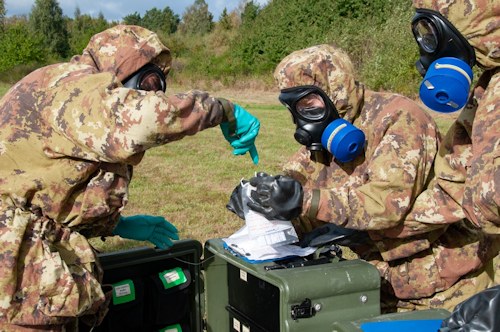 In the first days of the exercise, each of the participating countries, in a phase known as "Cross Training and Display", showed to the representatives of the other nations the abilities and assets available to then refine the common procedures in the various executive phases.
In the first days of the exercise, each of the participating countries, in a phase known as "Cross Training and Display", showed to the representatives of the other nations the abilities and assets available to then refine the common procedures in the various executive phases.
As part of the exercise, Italy has deployed CBRN assets of C2 (Command and Control), Recce team (aggressive chemical recognition), a CPCA (Area for the management of contaminated cargoes), 2 Sibcra Army and Aeronautics Team, ( for the sampling of aggressive CBRN), a team of Air Craft DECON (Internal and external decontamination of aircraft, a CCA structure (Contamination Control Area) + Col.Pro. (Collective Protection Environment).
During the training phase, realistic training scenarios were created in which, as a result of attacks with aggressive contaminants, teams of specialists from the participating countries were activated by a team of supervisors randomly, in order to verify their ability to interoperate according to the guidelines indicated in the NATO Directives. Specifically, it was possible to verify the ability to intervene on a helicopter, a transport aircraft and a fighter, decontaminating the same, extracting any personnel and goods on board and then transporting them to the reclamation areas.



